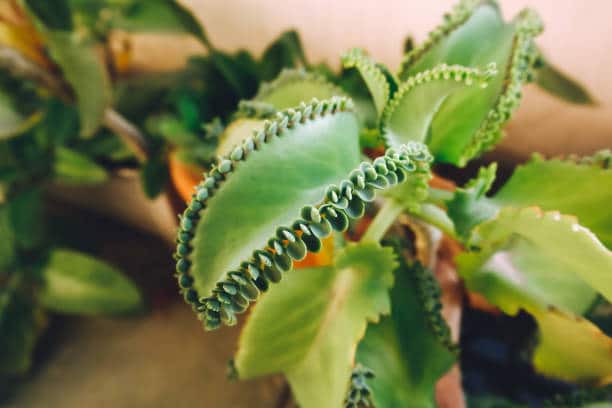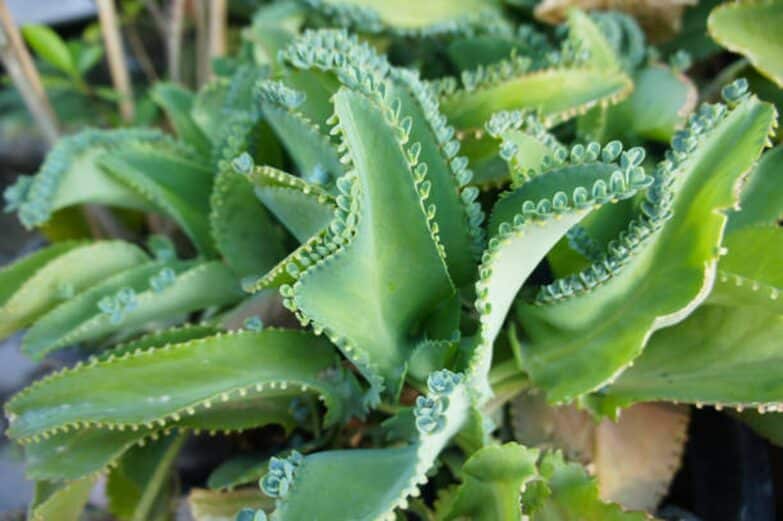Kalanchoe Pinnata, often referred to as the Air Plant, Cathedral Bells, Miracle Leaf, or Goethe Plant, is a succulent that is admired for both its healing properties and ornamental charm. Its resilience and minimal care needs make it an excellent choice for novice and seasoned gardeners alike. This article will offer insights into understanding, growing, and caring for this resilient beauty, turning your garden into a splendid display of nature’s marvels.
The Beauty of Kalanchoe Pinnata
Before diving into the care and cultivation of Kalanchoe Pinnata, it’s important to appreciate its unique characteristics.
Appearance
Kalanchoe Pinnata is a succulent perennial plant that can grow up to 5 feet tall. The leaves are fluted and scalloped, with tiny plantlets that develop along the leaf edges. It bears pendulous, bell-shaped flowers with a soft, peach hue, which bloom from late winter to spring.
Healing Properties
Beyond its ornamental appeal, Kalanchoe Pinnata is celebrated for its medicinal properties. Various cultures utilize its leaves for treating wounds, infections, inflammation, and other ailments. However, care should be taken when ingesting this plant as it contains compounds that can be toxic when consumed in large amounts.
Ideal Conditions for Kalanchoe Pinnata
Although Kalanchoe Pinnata is a hardy plant, it does have certain preferences that help it thrive.
Light
Kalanchoe Pinnata prefers bright, indirect light. While it can tolerate direct sunlight, too much harsh sunlight can cause the leaves to scorch.
Temperature
Being a tropical succulent, Kalanchoe Pinnata does best in warm temperatures. It can thrive in temperatures between 60-85°F. It’s not frost-tolerant, so if you live in a region with cold winters, it’s best to grow this plant indoors or in a heated greenhouse.
Cultivating and Caring for Kalanchoe Pinnata

Even though it’s a resilient plant, Kalanchoe Pinnata will thrive when given appropriate care.
Watering
Watering should follow the typical succulent rule of thumb – ‘soak and dry.’ The soil should be thoroughly soaked, and then allowed to dry out completely before the next watering. Overwatering can cause root rot, a common killer of succulents.
Soil and Fertilizer
Plant your Kalanchoe Pinnata in a well-draining soil mix, ideally one designed for succulents and cacti. During the growing season (spring and summer), you can feed it with a balanced, water-soluble fertilizer every two weeks. Reduce feeding to once a month in autumn and winter.
Propagation
One of the fascinating aspects of Kalanchoe Pinnata is its ease of propagation.
Propagation Through Leaf Cuttings
Propagation can be done through leaf cuttings. Simply take a healthy leaf, let it dry for a day or two to form a callus at the cut end, and then place it on top of the soil. The leaf will soon start to grow roots and new plantlets.
Propagation Through Plantlets
You can also propagate through the plantlets that form on the leaf edges. Gently remove a plantlet and place it on the soil. It will quickly take root and start growing.
Conclusion
Kalanchoe Pinnata is a fascinating plant that can be a fantastic addition to your garden or indoor plant collection. With its minimal care needs and resilient nature, this plant offers an excellent way to bring a touch of nature’s beauty into your surroundings while also providing a rewarding gardening experience.

